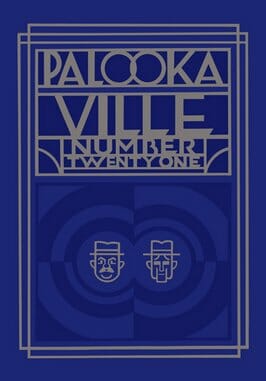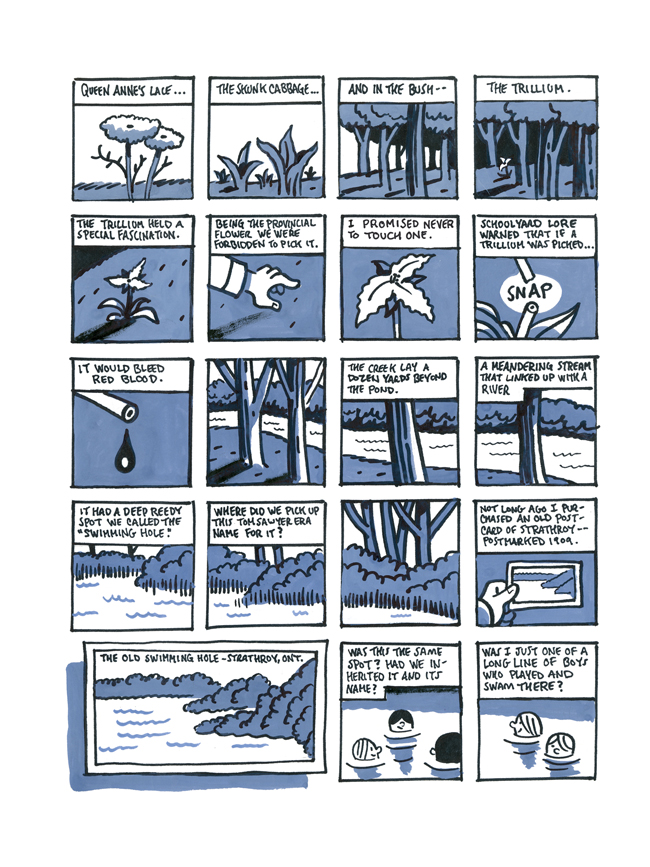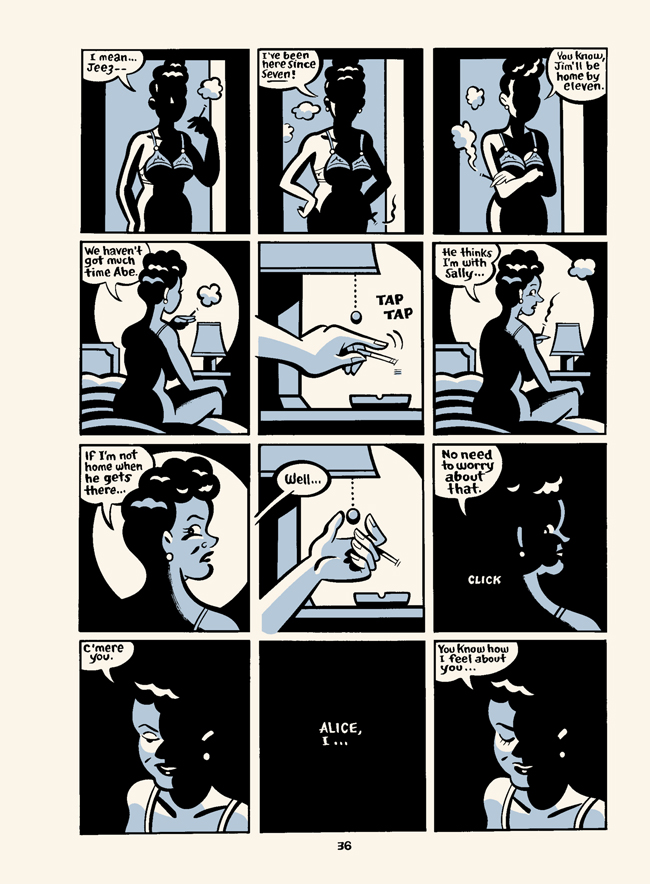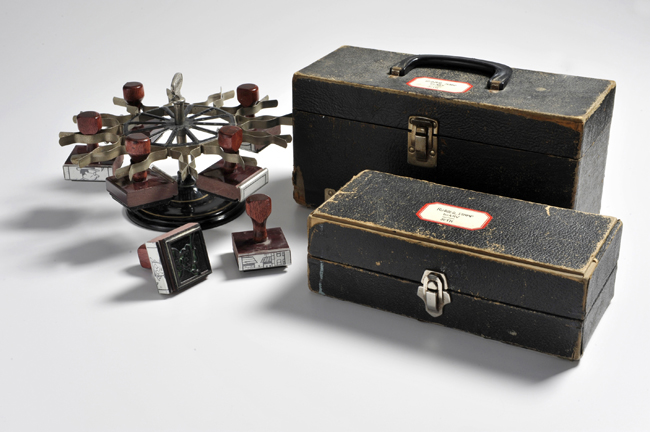
Writer & Artist: Seth
Publisher: Drawn & Quarterly
Release Date: October 9, 2013
If you want to sum up the comics artist known as Seth, you need only look at the paper band slipped around the back cover of Palookaville #21, an ongoing collection that comes out every year or two. At the very bottom, the paper band reads: “{The artist requests that this band be disposed of upon purchase.}” On the one hand, Seth is a perfectionist. The book itself is a lovely piece of printing, with an elaborately debossed cover printed with silver details and limited, but beautiful, metallic inks inside. It’s totally understandable that the artist wouldn’t want this cheap piece of paper, with the nerve to market the volume and feature a bar code, to mar his creation. On the other hand, who in the hell does this guy think he is? It’s the Jonathan Franzen-Oprah problem all over again.
Seth can get away with this attitude a little more. His work is deeply steeped in nostalgia and, at the same time, its creator is self-conscious of the pretentiousness of that stance and apologetic for something he ultimately can’t help. Yes, Seth rambles on about minor details of the past of Canadian cities, or, in this volume, his own childhood. His musings are often repetitive, the way all of our thoughts are (some of us just choose not to commit them to paper). But at the same time, Seth recognizes that characteristic. He even calls attention to it.
The middle section of the three pieces that comprise Palookaville #21 is an excerpt from Seth’s rubber-stamp diaries, a project that resulted from a conversation with fellow cartoonist Ivan Brunetti. The project started with this advice from Seth to his colleague: “Hey, Ivan, why don’t you get some rubber stamps made up and simply compose the strip [a daily comic strip diary] from variations of the repeated stamps. Make up, say, ten useful panels — walking, sitting at the drawing board, a head shot, etc. — that would work.” He then promptly stole the idea for himself. Seth confesses that a) he makes prominent use of the one stamp that merely offers a panel border, to hold whatever he might sketch into it, and b) that his collection has expanded to at least 30 stamps. That said, the strip still seems to largely consist of different perspectives on the same action: Seth walking in profile from a long shot, Seth walking from the back in a long shot, Seth walking from the back in a close-up, and Seth walking from the back but slightly in profile in close-up. It’s both comforting and crushingly sad — a combination in which Seth specializes — to realize that a life can be summed up thusly.
The first section of the book is another chunk of “Clyde Fans,” a serial that has been partially published on its own, and the last is called “Nothing Lasts,” a memoir that focuses on Seth’s childhood as seen through the many different houses he lived growing up. Both entries, like the rubber stamp diaries, consist entirely — or almost entirely — of square, evenly-sized panels. It’s interesting to compare this aesthetic to Seth’s early work, which was considerably looser and more lyrical. Is it possible the artist has become even more of a grumpy old man in his older age? Even more uptight and restrained than he was when he was old before his time? Or is it the hallmark of maturity to be able to wring so much out of such simple building blocks? Equal parts infuriating and quietly beautiful, Palookaville #21 is about as Seth as Seth gets.


